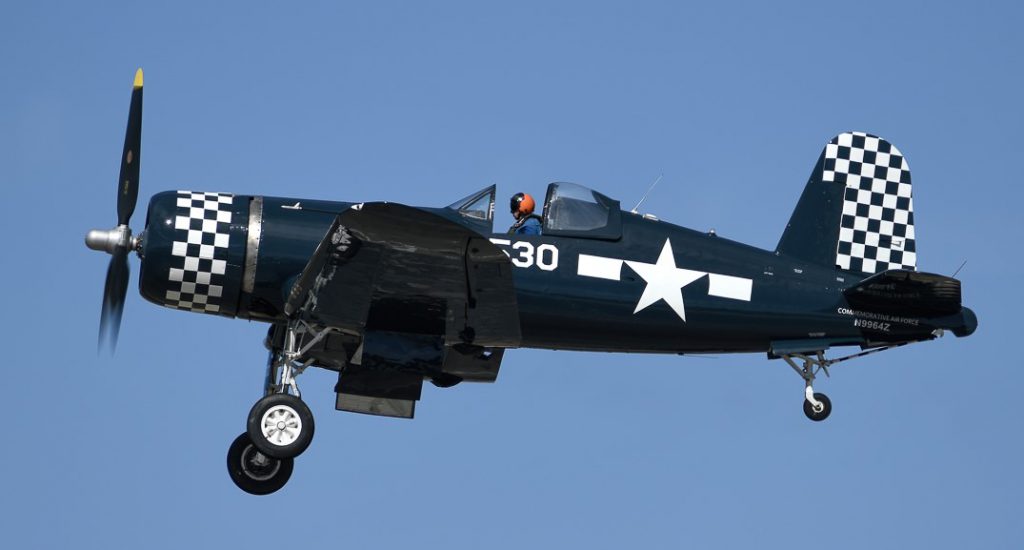A World War II-era Corsair fighter based at Commemorative Air Force (CAF) Airbase Georgia in Peachtree City has a new coat of navy-blue paint, courtesy of PPG and employee volunteers at the Delta Air Lines Technical Operations Center in Atlanta. Recently featured in the movie, “Devotion,” the FG-1D Corsair was carefully stripped to bare metal and repainted to return it to like-new condition. The paint design represents VMF-312, a Marine Corps squadron known as the “Checkerboards” that flew Corsairs in WWII and Korea. The unit flies F/A-18 Hornets today.
“We are extremely grateful to the employees and volunteers at Delta Air Lines for restoring this Corsair to its original appearance,” said Airbase Leader Joel Perkins. “This will delight the public and aviation fans who come to see the Corsair at airshows, aviation events and our Warbird Museum. We plan to showcase our Corsair at a Corsair Reunion scheduled for the EAA Air Venture in July, and for the Navy Legacy Flight Foundation program where it will fly in close flight maneuvers with today’s frontline fighters.”

(Photos courtesy of CAF Airbase Georgia and Josh Frizzell)
This Corsair was built by Goodyear as a supplemental manufacturer, giving it the FG designation. It never saw military combat but was used stateside in various roles until the U.S. Navy struck it from active duty in 1956. It was privately owned for a few years until it was sold in 1960 to CAF Hall of Fame member Marvin L. “Lefty” Gardner. The Corsair was last painted in 2001 at the Vought Industries Dallas facility, where it received the number 530 from VMF-312, representing 1st Lt. MO Chance. CAF Airbase Georgia has been home for the FG-1D “530” since August 2012.
Chance Vought manufactured 12,571 F4U Corsairs in the longest production run of any piston-engined fighter in U.S. history (1942–53). The Corsair served in the U.S. Navy, U.S. Marines, Fleet Air Arm and the Royal New Zealand Air Force, as well as the French Navy Aéronavale and other smaller air forces, until the 1960s. It quickly became the most capable carrier-based fighter-bomber of World War II. Some Japanese pilots regarded it as the most formidable American fighter of the war, and the U.S. Navy counted an 11:1 kill ratio with the F4U Corsair. The Corsair also proved to be an excellent fighter-bomber, serving almost exclusively in that role throughout the Korean War and during the French colonial wars in Indochina and Algeria.



